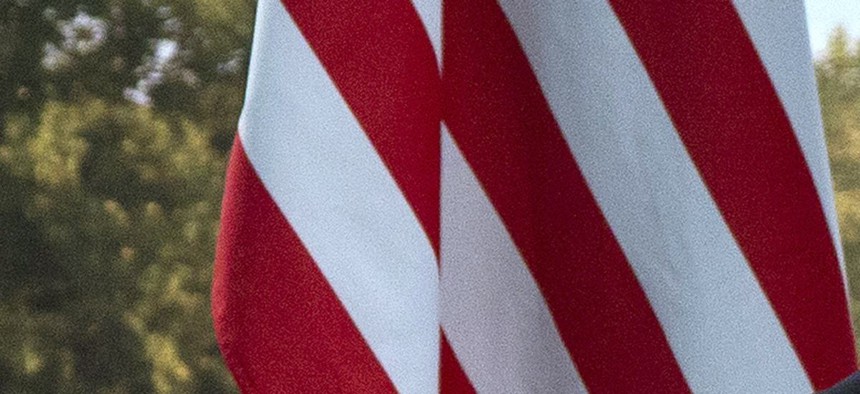Is This How the War on Terror Ends?
Rivalry among great powers long characterized international affairs—and now it's back. By Peter Beinart
Maybe this is how the “war on terror” ends.
Since entering his second term, President Obama has signaled his desire to close out a foreign-policy era that he believes has drained America’s economic resources and undermined its democratic ideals. But it hasn’t been easy. Partly, Obama remains wedded to some of the war on terror’s legally dubious tools—especially drone strikes and mass surveillance. And just as importantly, Obama hasn’t had anything to replace the war on terror with. It’s hard to end one foreign-policy era without defining a new one. The post-Cold War age, for instance, dragged on and on until 9/11 suddenly rearranged Americans’ mental map of the world.
Now Russia may have solved Obama’s problem. Vladimir Putin’s military intervention in Ukraine doesn’t represent as sharp a historical break as 9/11 did, but it does offer the clearest glimpse yet of what the post-war on terror era may look like. To quote Secretary of State John Kerry, what comes after the war on terror is the “19th century.”
Explaining what that means requires some history. For a century after the end of the Napoleonic Wars in 1815, five great powers—Britain, Russia, France, Austria, and Prussia (later Germany)—jockeyed for influence in Europe. Then World War I smashed three of them: Russia, Germany, and Austria-Hungary. And then World War II smashed Germany again, while bankrupting Britain and France. Suddenly, the world found itself dominated by two superpowers, the U.S. and U.S.S.R. Each was more ideologically driven and more capable of projecting power across the entire globe than the great powers that had preceded the world wars.
So it went for almost half a century, until the Soviet empire collapsed. Immediately, some international-relations scholars predicted a return to old-fashioned great-power rivalry. In 1990, the University of Chicago’s John Mearsheimer published an essay entitled “Back to the Future,” in which he predicted a new “multipolar” competition resembling the one that held sway in the 19th century. This competition, Mearsheimer predicted, would be less ideological than the Cold War, but more unstable, and might plunge Europe into war.
It didn’t happen. To the contrary, NATO—having won the Cold War—expanded, and no adversary rose to challenge it. This absence of great-power strife enabled the massive exchange of money, people, culture, and ideas dubbed “globalization.” Even after 9/11, the era of relative great-power harmony endured as the world’s strongest countries largely cooperated against terrorism. “We have an historic opportunity to break the destructive pattern of great power rivalry that has bedeviled the world since [the] rise of the nation state in the 17th century,” declared Secretary of State Condoleezza Rice in 2002. “Today, the world’s great centers of power are united by common interests, common dangers, and—increasingly—common values.”
Although Americans didn’t think much about it at the time, this absence of great-power tension enabled much of what the United States did in the war on terror. Had the Soviet Union not withdrawn its troops from Afghanistan and orphaned its former client, Iraq, the U.S. could never have invaded and occupied those countries. Had China seriously challenged American power in the Pacific, the U.S. would never have enjoyed the luxury of focusing its attention and resources so overwhelmingly on the greater Middle East. Terror networks like al-Qaeda and small “rogue” states like Iraq dominated American consciousness because big powers like Russia and China stood largely offstage.
That’s what’s now changed. The risk of jihadi terror remains; Iran is still seeking the capacity to build a nuclear bomb. But these threats appear comparatively smaller when Russia occupies Ukraine or, as happened last November, China erects an air-defense zone over most of the East China Sea. Just look at how Putin’s actions have pushed Israeli Prime Minister Benjamin Netanyahu’s Iran-focused visit to Washington this week off the front page.
When there’s serious tension between America and other major powers, that tension becomes the dominant reality in U.S. foreign policy. And it’s likely that tension will endure. Vladimir Putin has now twice invaded his neighbors in an effort to halt, if not reverse, the West’s encroachment into the former U.S.S.R. Yet the more bullying he becomes, the more desperately many in Ukraine, Georgia, Moldova, and perhaps other ex-Soviet republics will seek economic and military bonds with Europe and the U.S. Large chunks of the former Soviet Union now constitute a gray zone where competition between Russia and the West can breed diplomatic feuds, economic sanctions, and even proxy war.
Similarly, as China continues to rise economically, it will keep asserting control over islands, airspace, and sea lanes claimed by its smaller neighbors. And that will cause those smaller neighbors to turn to the U.S. for help, which will strain the U.S.-China relationship diplomatically, or worse. China is geopolitically ascendant and Russia is not, but both are led by intensely nationalistic regimes willing to risk conflict with the West to define a sphere of influence over their neighbors. Given the political pressure on Barack Obama—and probably any future American president—to avoid the appearance of the U.S. being in global retreat, that’s a recipe for discord. And it is this great-power tension that will increasingly define a new, post-war on terror era in America’s relations with the world.
It won’t be another Cold War. The Cold War was a contest between two superpowers (although things got more complicated after the Sino-Soviet split); this new era of great-power tension features at least three. The Cold War was intensely ideological, with the U.S. and U.S.S.R. each promoting their political and economic systems as models for the world. Today, neither Russia nor China is espousing a revolutionary creed.
There are obvious differences between the 21st and 19th centuries, too. Democracy, nationalism, economic interdependence, and human rights are stronger forces in today’s world. That makes naked aggression harder; it makes quiet diplomacy harder, too.
But this new era will be more like the 19th century than either the bipolar, ideological Cold War, the relatively placid post-Cold War era of the globalized 1990s, or the post-9/11 war on terror, in which U.S. policymakers focused overwhelmingly on terror networks and small, rogue states.
The best thing one can say about Obama’s foreign policy is that by moving to end the financially draining wars in Iraq and Afghanistan and, so far, avoiding a new one in Iran, he has left the U.S. better positioned for this new era than it was when he took office. Which is good, since this new era is likely to be more dangerous, both for America and the world, than the last.





